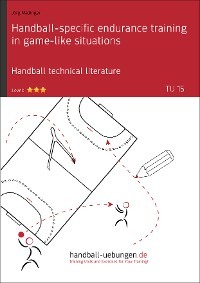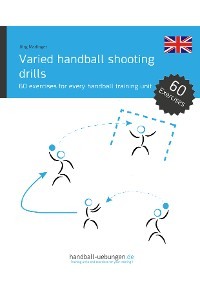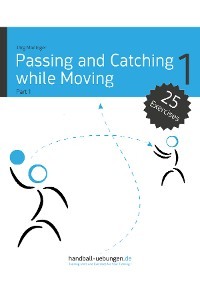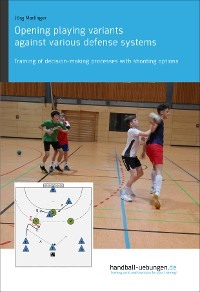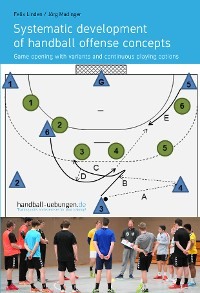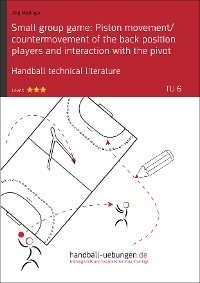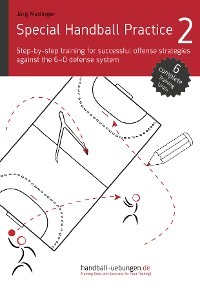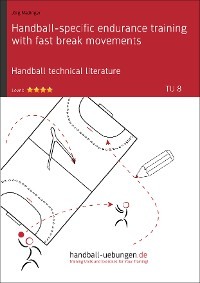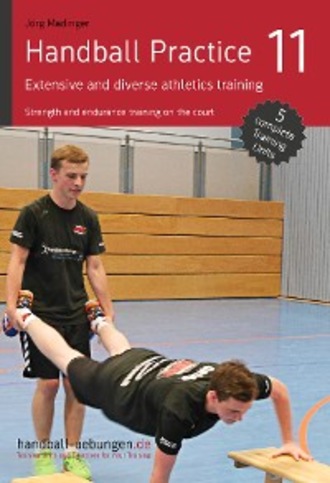
Полная версия
Handball Practice 11 – Extensive and diverse athletics training
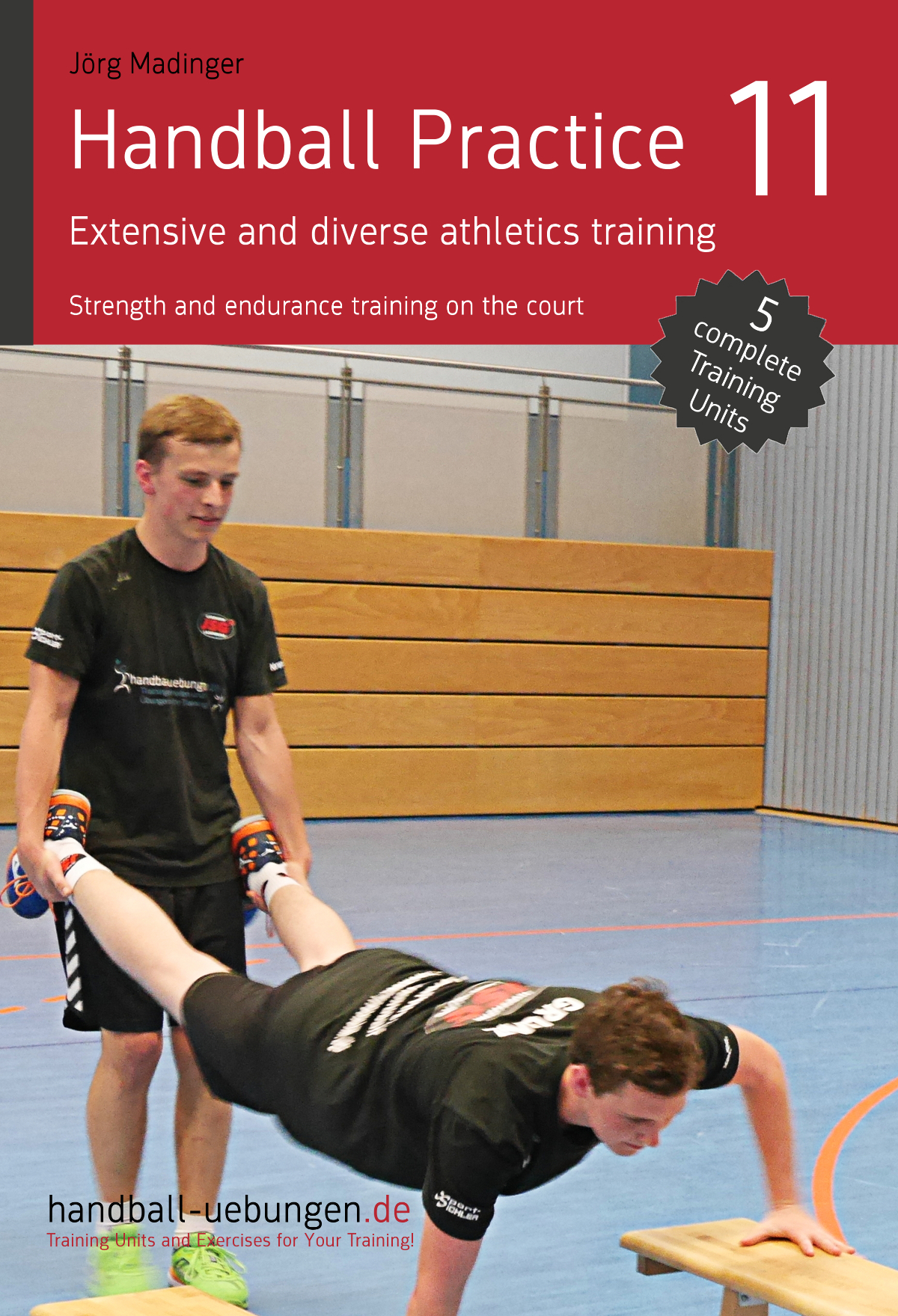
Introduction
Dear reader
Thank you for choosing a book of the handball-uebungen.de training guide series.
The present training units can support you in improving your team's handball-specific fitness, especially in terms of speed, speed endurance, and strength.
The strength training units focus on improving core stability with musculoskeletal and dynamic stabilization exercises. Stability plays an important role in handball, as it is crucial to a high physical performance and can prevent injuries.
Considering speed and speed strength, reflexive jumping power, short sprints, and speed endurance are especially important. These skills are essential for succeeding in handball.
The training units combine course strength trainings with short contests and handball-specific exercises, thus showing the possibilities for creating a diverse fitness training that is also fun for the team.
The present training units are designed for older youth teams and adult teams. Hence, certain physical requirements must be met. The exercises can also be used in the training of younger teams, however, you have to make sure that the difficulty level is appropriate for the younger players.
This book contains the following training units:
TU 1 – Series of shots with reflexive jumping power training (273) ()
This unit focuses on training the jumping power with handball-specific shooting exercises. After warm-up, a coordination run exercise, and a sprint contest, ball familiarization includes jumping and additional exercises with the ball. After the goalkeeper warm-up shooting, reaction time and jumping power are trained in two individual shooting exercises. A closing game completes this training unit.
TU 2 – Intensive speed strength/speed strength endurance training with various running directions (TU 279) ()
This athletics unit focuses on improving speed strength endurance. After warm-up and a short game, five athletics exercises train the various groups of thigh muscles by moving forwards, backwards, and to the side. This training unit is very intense and can thus be incorporated in preparation periods or season breaks.
TU 3 – Handball-specific endurance training with fast break movements (285) ()
This unit trains handball-specific endurance focusing on running and jumping exercises. After warm-up including a coordination run exercise, ball familiarization includes a passing and running course across the whole court. Goalkeeper warm-up shooting includes a series of 4 shots combined with a subsequent 2-on-2 fast break. The following endurance unit requires jumping exercises and playing 2-on-2 across the whole court alternately. This intense unit ends with a team exercise and a team fast break contest.
TU 4 – Intense athletics training for arms and legs (297) ()
This intense training unit focuses on athletics training. After warm-up including a game with high running intensity and a coordination run exercise, an athletics course is done. An additional jumping and strength exercise for the arms and a running exercise complete this training unit.
TU 5 – Handball-specific endurance training in game-like situations (319) ()
This training unit contains a playful, handball-specific endurance unit. Each exercise is characterized by a high running intensity and is directly related to the handball game. After warm-up and ball familiarization as well as goalkeeper warm-up shooting, an endurance course is done. In this, two players have to accomplish a task as opponents. Which team is the first to score eight times? A sprint contest completes this intense training unit.
Publishing information
1st English edition released on 09 Aug 2017
German original edition released on 18 Jan 2017
Published by: DV Concept
Editors, design, and layout: Jörg Madinger, Elke Lackner
Proofreading and English translation: Nina-Maria Nahlenz
ISBN: 978-3-95641-191-5
This publication is listed in the catalogue of the German National Library. Please refer to http://dnb.de for bibliographic data.
The work and its components are protected by copyright. No reprinting, photomechanical reproduction, storing or processing in electronic systems without the publisher's written permission.
1. Insight into the annual schedule
Annual schedule
The following points should be taken into consideration when creating your annual schedule:
- How many training units do I have (do not forget vacations, holidays, and the season schedule)?
- What do I want to achieve/improve this season?
- What goals should be achieved within a given concept (of the club, the association or federation)?
- What skills does my team have (do the individual players have)? You should continuously analyze and document the skills of your team so that you can make a target-performance comparison at a regular basis. The level of performance especially varies among young players. This has to be taken into consideration when training these teams. By making well-matched groups, you can optimize the performance of individual players in group training. You may also incorporate your own training units for certain performance groups or players with similar deficits in the annual schedule.
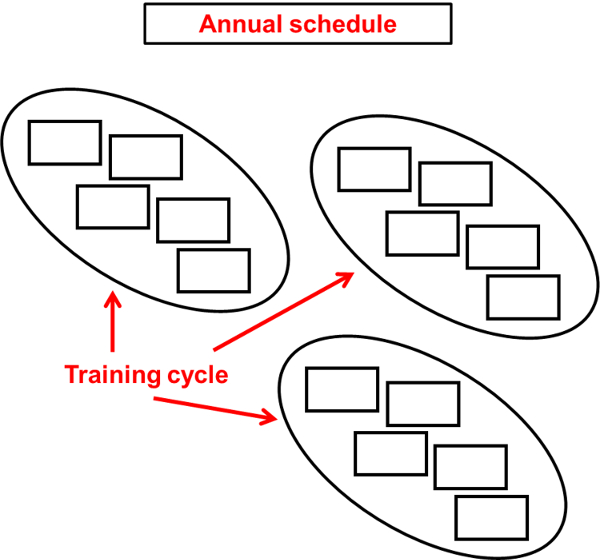
Individual steps of the annual schedule
- You may divide your annual schedule into special subsections.
- In the training of a youth team, you might want to apply the following structure:
→ End of season to summer vacations
→ Training during the vacations
→ Phase until beginning of next season
→ You may want to divide the season into a first and a second half (still keeping the vacations in mind).
You should then refine and elaborate these training phases step by step.
- Division of training phases into sections with part-specific objectives (monthly schedule, e.g.)
- Division into weekly schedules
- Planning of individual training units
The present training units are especially suitable for the preparation periods, but also for longer breaks between matches during the season.
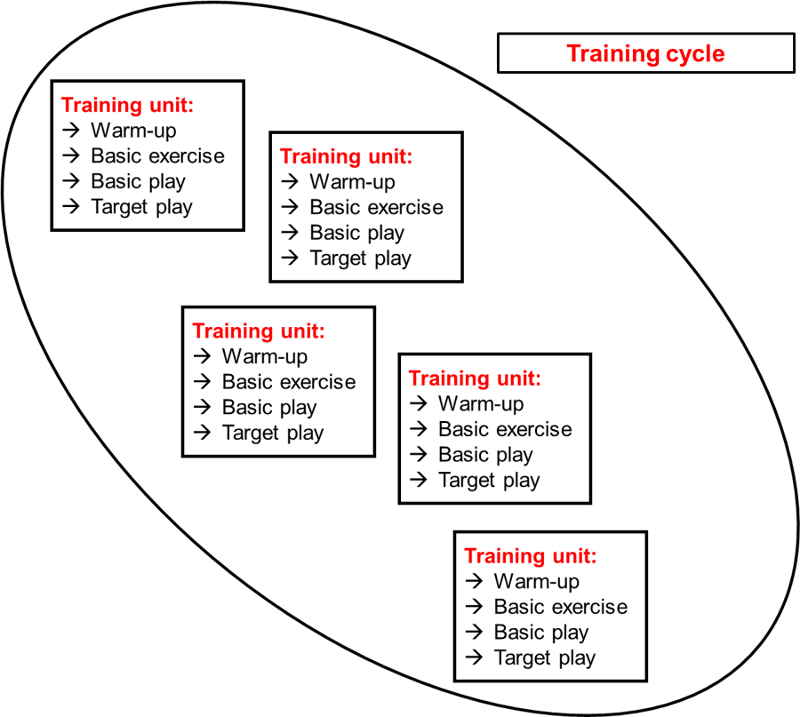
Creating well-structured training units
A clear structure is important for the annual schedule as well as for the planning of the individual training units.
- Work with parts (see monthly schedule). You should work on a special topic over a certain period of time, especially in the training of youth teams. That way, you can repeat exercises and make sure the players memorize the courses.
- Each training unit should have a clear training focus. Do not mix topics within a training unit, but make sure that each exercise has a well-defined objective.
- The players are corrected in accordance with the training unit's focus (when training the defense, defense actions are corrected and pointed out).
Lesen Sie weiter in der vollständigen Ausgabe!
Lesen Sie weiter in der vollständigen Ausgabe!
Lesen Sie weiter in der vollständigen Ausgabe!
Lesen Sie weiter in der vollständigen Ausgabe!
Lesen Sie weiter in der vollständigen Ausgabe!
Lesen Sie weiter in der vollständigen Ausgabe!
Lesen Sie weiter in der vollständigen Ausgabe!
Lesen Sie weiter in der vollständigen Ausgabe!
Lesen Sie weiter in der vollständigen Ausgabe!
Lesen Sie weiter in der vollständigen Ausgabe!
Lesen Sie weiter in der vollständigen Ausgabe!
Lesen Sie weiter in der vollständigen Ausgabe!
Lesen Sie weiter in der vollständigen Ausgabe!
Lesen Sie weiter in der vollständigen Ausgabe!
Lesen Sie weiter in der vollständigen Ausgabe!
Lesen Sie weiter in der vollständigen Ausgabe!
Lesen Sie weiter in der vollständigen Ausgabe!
Lesen Sie weiter in der vollständigen Ausgabe!
Lesen Sie weiter in der vollständigen Ausgabe!
Lesen Sie weiter in der vollständigen Ausgabe!
Lesen Sie weiter in der vollständigen Ausgabe!
Lesen Sie weiter in der vollständigen Ausgabe!
Lesen Sie weiter in der vollständigen Ausgabe!
Lesen Sie weiter in der vollständigen Ausgabe!
Lesen Sie weiter in der vollständigen Ausgabe!
Lesen Sie weiter in der vollständigen Ausgabe!
Lesen Sie weiter in der vollständigen Ausgabe!
Lesen Sie weiter in der vollständigen Ausgabe!
Lesen Sie weiter in der vollständigen Ausgabe!
Lesen Sie weiter in der vollständigen Ausgabe!
Lesen Sie weiter in der vollständigen Ausgabe!
Lesen Sie weiter in der vollständigen Ausgabe!
Lesen Sie weiter in der vollständigen Ausgabe!
Lesen Sie weiter in der vollständigen Ausgabe!
Lesen Sie weiter in der vollständigen Ausgabe!
Lesen Sie weiter in der vollständigen Ausgabe!
Lesen Sie weiter in der vollständigen Ausgabe!
Lesen Sie weiter in der vollständigen Ausgabe!
Lesen Sie weiter in der vollständigen Ausgabe!
Lesen Sie weiter in der vollständigen Ausgabe!
Lesen Sie weiter in der vollständigen Ausgabe!
Lesen Sie weiter in der vollständigen Ausgabe!
Lesen Sie weiter in der vollständigen Ausgabe!
Lesen Sie weiter in der vollständigen Ausgabe!
Lesen Sie weiter in der vollständigen Ausgabe!
Lesen Sie weiter in der vollständigen Ausgabe!
Lesen Sie weiter in der vollständigen Ausgabe!
Lesen Sie weiter in der vollständigen Ausgabe!
Lesen Sie weiter in der vollständigen Ausgabe!
Lesen Sie weiter in der vollständigen Ausgabe!


